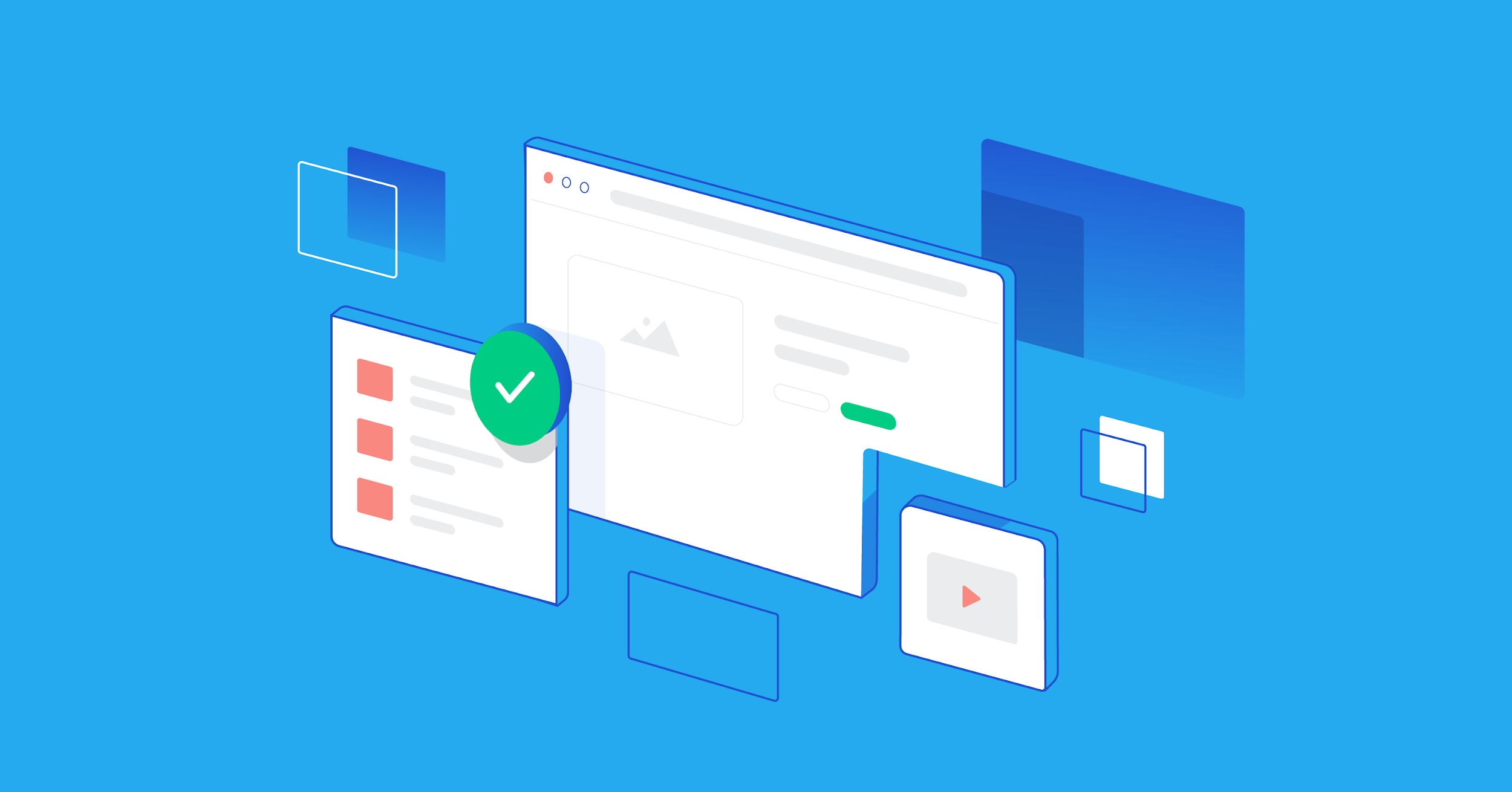In today’s fast-paced digital landscape, capturing and retaining the attention of your target audience is becoming increasingly challenging. As consumers are bombarded with countless marketing messages, standing out from the crowd requires innovative approaches. One such approach is interactive marketing. Interactive marketing goes beyond traditional advertising methods by actively involving the audience, creating immersive experiences, and fostering meaningful connections. In this blog post, we will explore the power of interactive marketing and how it can revolutionize your marketing efforts.
What is Interactive Marketing?
Interactive marketing is an approach that encourages active participation from customers, enabling them to engage with a brand’s content in a two-way communication. It goes beyond traditional one-sided marketing messages and focuses on creating immersive experiences that entertain, educate, and delight the audience. Whether through quizzes, polls, games, augmented reality (AR), virtual reality (VR), or interactive videos, the goal is to captivate the consumer and make them an active participant in the marketing campaign.
Types of interactive marketing
Interactive marketing encompasses a wide range of strategies and techniques that actively involve customers in the marketing process. Here are several types of interactive marketing that businesses can utilize to engage their target audience:
- Quizzes and Surveys: Quizzes and surveys are effective tools for interactive marketing as they encourage customer participation and provide valuable insights. Businesses can create interactive quizzes related to their products or industry, allowing customers to test their knowledge or discover personalized recommendations. Surveys gather customer feedback, preferences, and demographic information, enabling businesses to tailor their marketing strategies and offerings accordingly.
- Gamification: Gamification involves integrating game elements and mechanics into marketing campaigns to enhance engagement. Brands can create interactive games or challenges that reward customers with points, badges, or prizes for completing certain tasks or achieving specific goals. Gamification not only makes the marketing experience fun and entertaining but also encourages customers to spend more time interacting with the brand.
- Interactive Videos: Interactive videos allow viewers to actively engage with the content by making choices or interacting with elements within the video. Viewers can click on hotspots, select different story paths, or access additional information through interactive overlays. This type of marketing provides an immersive and personalized experience, keeping viewers engaged and increasing brand awareness.
- Augmented Reality (AR): AR technology overlays digital elements onto the real world, providing users with interactive and engaging experiences. Brands can leverage AR to create virtual try-on experiences for products, interactive product demonstrations, or gamified experiences that incorporate the user’s surroundings. AR enhances customer engagement and provides a unique way to showcase products or services.
- Virtual Reality (VR): VR takes interactive marketing to the next level by immersing users in a completely virtual environment. Brands can create VR experiences that allow customers to explore virtual showrooms, visit exotic locations, or interact with virtual product simulations. VR provides a highly immersive and memorable experience, creating a strong impact and leaving a lasting impression on customers.
- Interactive Social Media Campaigns: Social media platforms offer numerous opportunities for interactive marketing. Brands can run contests, challenges, or interactive campaigns that encourage users to participate, share content, or engage with the brand’s social media accounts. Hashtag campaigns, user-generated content competitions, and interactive polls are just a few examples of how brands can drive engagement and build a community on social media.
- Personalized Experiences: Tailoring marketing experiences to individual customers can significantly enhance engagement. Personalization can be achieved through dynamic content that adapts to customer preferences, location-based offers, or personalized recommendations based on past interactions or purchase history. By making customers feel understood and valued, businesses can create deeper connections and improve conversion rates.
These are just a few examples of the types of interactive marketing that businesses can employ to engage their audience. The key is to create experiences that actively involve customers, provide value, and differentiate the brand in a crowded marketplace. By leveraging interactive marketing techniques, businesses can captivate their target audience, foster brand loyalty, and drive business growth.
Advantages of interactive marketing
Enhancing Customer Engagement:
One of the primary advantages of interactive marketing is its ability to boost customer engagement. By involving customers in the marketing process, businesses can create a sense of ownership and personal connection. Interactive elements like polls and surveys allow customers to voice their opinions, making them feel heard and valued. This engagement builds brand loyalty and fosters a stronger relationship between the customer and the brand.
Driving Brand Awareness and Recognition:
Interactive marketing is an excellent tool for building brand awareness and recognition. When done right, interactive campaigns have the potential to go viral, generating buzz and attracting attention far beyond the target audience. Memorable experiences shared through social media or word of mouth can significantly increase brand visibility and help businesses reach new audiences. The interactive nature of these campaigns also makes them more memorable, ensuring that customers remember and recognize the brand long after the interaction has ended.
Collecting Valuable Customer Data:
Another significant advantage of interactive marketing is the opportunity to collect valuable customer data. By implementing interactive elements, businesses can gather insights into customer preferences, behaviors, and demographics. Whether it’s through interactive quizzes that provide personalized recommendations or contests that require user registration, interactive marketing provides a wealth of data that can inform future marketing strategies and improve customer targeting.
Increasing Conversion Rates:
Interactive marketing has the potential to significantly impact conversion rates. By actively engaging customers and providing personalized experiences, businesses can increase the likelihood of conversion. Interactive product configurators, for example, allow customers to customize and visualize products to their liking, enhancing the buying experience and reducing purchase anxiety. Interactive videos can guide customers through the sales funnel, providing valuable information and answering questions in real-time. These interactive touchpoints make the customer journey smoother and increase the chances of conversion.
Building Emotional Connections:
Interactive marketing has the power to evoke emotions and create memorable experiences that resonate with customers. By incorporating storytelling, gamification, or immersive technologies like AR and VR, brands can transport customers to unique and engaging worlds that leave a lasting impression. These emotional connections increase brand affinity and make customers more likely to share their experiences with others, thus expanding the brand’s reach organically.
Interactive marketing tactics
Interactive marketing tactics refer to specific strategies and techniques that businesses can employ to actively engage their target audience and create interactive experiences. Here are some popular interactive marketing tactics:
- Interactive Content: Creating interactive content is an effective way to engage customers and encourage their active participation. This can include interactive quizzes, polls, calculators, assessments, or interactive infographics. Interactive content not only captures attention but also provides an opportunity to collect valuable data and insights about customers’ preferences and behaviors.
- User-Generated Content (UGC) Campaigns: UGC campaigns involve encouraging customers to create and share their own content related to the brand. This can include photos, videos, reviews, or testimonials. Brands can create contests, challenges, or hashtags to incentivize users to participate and share their experiences. UGC campaigns not only engage customers but also leverage their social networks to increase brand visibility and credibility.
- Gamified Experiences: Gamification techniques can be employed to make marketing experiences more interactive and enjoyable. This can involve creating games, challenges, or interactive quizzes with rewards and incentives. By adding elements of competition, achievement, and progression, gamified experiences captivate users and encourage repeat engagement.
- Virtual Reality (VR) and Augmented Reality (AR): Leveraging VR and AR technologies can create highly immersive and interactive experiences. Brands can develop VR or AR applications that allow customers to visualize products in their environment, virtually try on clothing or accessories, or explore virtual showrooms. These technologies provide a unique and engaging way to showcase products and services, increasing customer involvement.
- Interactive Social Media Campaigns: Social media platforms offer a wealth of interactive marketing opportunities. Brands can run interactive campaigns such as contests, polls, or challenges on social media to encourage user participation and engagement. Asking questions, creating interactive stories, or conducting live Q&A sessions can also foster two-way communication and build a community around the brand.
- Personalization and Customization: Tailoring marketing experiences to individual customers enhances engagement. By leveraging customer data and preferences, brands can deliver personalized recommendations, product configurators, or interactive tools that allow customers to customize their choices. Personalization creates a sense of ownership and relevance, increasing customer involvement.
- Interactive Email Marketing: Email marketing can be made interactive by incorporating interactive elements like GIFs, sliders, surveys, or quizzes within the email content. Interactive emails provide an engaging and dynamic experience, encouraging recipients to interact with the content and take desired actions such as clicking on links or making purchases.
- Live Streaming and Webinars: Live streaming events or webinars provide real-time interaction with the audience. Brands can host live Q&A sessions, product demonstrations, or educational webinars where participants can ask questions, provide feedback, or engage in discussions. Live streaming fosters a sense of immediacy and interactivity, creating a more engaging experience.
These interactive marketing tactics can be combined and tailored to suit the specific goals and target audience of a business. By incorporating interactive elements into marketing strategies, businesses can create memorable experiences, foster customer engagement, and drive better results in today’s interactive digital landscape.
The Power of Interactive Marketing
Engaging Experiences: Interactive marketing aims to captivate and engage consumers through interactive experiences. It allows individuals to actively participate in the brand’s story, providing them with a sense of ownership and involvement. Whether it’s through quizzes, polls, contests, or games, interactive experiences grab attention, elicit emotions, and create memorable moments that resonate with the audience. By encouraging active participation, brands can forge stronger connections and leave a lasting impression.
Personalization and Customization: Interactive marketing enables personalization and customization, tailoring the marketing experience to individual preferences. By gathering data and leveraging technology, brands can offer personalized recommendations, interactive content, and customized offers. This level of personalization makes consumers feel seen and understood, enhancing their engagement and loyalty. Customized experiences can range from interactive product configurators to personalized quizzes that provide tailored recommendations. The ability to adapt marketing messages to specific audience segments enhances relevance and resonates with consumers on a deeper level.
Two-Way Communication: Unlike traditional marketing methods that are one-sided, interactive marketing facilitates two-way communication between brands and consumers. It opens avenues for dialogue, feedback, and collaboration. Brands can actively listen to their audience, gather insights, and adjust their strategies accordingly. Whether it’s through social media conversations, interactive live events, or user-generated content campaigns, interactive marketing enables brands to build authentic relationships with their customers. By valuing and responding to customer input, brands demonstrate their commitment to customer satisfaction, building trust and loyalty.
Data and Insights: Interactive marketing generates valuable data and insights that can inform future marketing efforts. By analyzing user interactions, preferences, and behaviors, brands can gain deeper understanding into their audience’s needs and preferences. This data can drive targeted campaigns, personalized messaging, and better decision-making. Interactive marketing allows brands to measure engagement, track conversions, and optimize their strategies based on real-time data. These insights enable continuous improvement and ensure marketing efforts are aligned with customer expectations.
Creating Shareable Content: Interactive marketing has the potential to create highly shareable content. When consumers have a positive and engaging experience, they are more likely to share it with their network. Social media platforms provide the ideal environment for interactive content to go viral. Whether it’s a fun quiz, an immersive augmented reality experience, or a user-generated content campaign, interactive marketing encourages users to become brand advocates, amplifying the brand message and expanding its reach.
How to implement an interactive marketing plan
Implementing an interactive marketing plan requires careful planning and execution. Here are the steps to help you effectively implement an interactive marketing plan:
- Define Goals and Objectives: Start by clearly defining your goals and objectives for the interactive marketing plan. What do you want to achieve? Is it increased brand engagement, lead generation, higher conversion rates, or improved customer satisfaction? Setting specific, measurable, achievable, relevant, and time-bound (SMART) goals will guide your strategy and help evaluate its success.
- Understand Your Target Audience: Gain a deep understanding of your target audience, their preferences, behaviors, and pain points. Conduct market research, analyze customer data, and engage in conversations to identify what interactive experiences would resonate with your audience. This understanding will guide the design and implementation of your interactive marketing initiatives.
- Choose Appropriate Interactive Tactics: Select the interactive marketing tactics that align with your goals and target audience. Consider the different types of interactive marketing discussed earlier, such as quizzes, gamification, VR/AR, social media campaigns, or personalized experiences. Choose tactics that will engage your audience effectively and deliver the desired outcomes.
- Develop Compelling Content: Create engaging and interactive content that aligns with your chosen tactics and resonates with your audience. Ensure your content is valuable, informative, and entertaining. Whether it’s interactive quizzes, videos, games, or personalized recommendations, focus on delivering an experience that captures attention, encourages participation, and provides value to the audience.
- Leverage Technology: Identify and leverage the appropriate technology tools or platforms to implement your interactive marketing plan. This could include interactive content creation tools, AR/VR applications, social media platforms, email marketing software, or customer data analytics tools. Choose tools that suit your specific needs and enable seamless execution of your interactive marketing initiatives.
- Integrate Across Channels: Ensure that your interactive marketing efforts are integrated across various channels and touchpoints. Consistency in messaging and branding is crucial for a cohesive customer experience. Make sure your interactive content is accessible through your website, social media profiles, email campaigns, and other relevant channels. Seamless integration increases the reach and impact of your interactive marketing efforts.
- Promote and Amplify: Develop a promotion strategy to create awareness and generate excitement about your interactive marketing initiatives. Utilize social media, email marketing, influencers, and other relevant channels to promote your interactive content and engage your audience. Encourage sharing, participation, and user-generated content to amplify the reach of your interactive campaigns.
- Measure and Optimize: Track and measure the performance of your interactive marketing initiatives against your defined goals. Analyze metrics such as engagement rates, conversion rates, customer feedback, and other relevant KPIs. Use these insights to optimize your interactive marketing plan, refine your tactics, and improve future campaigns.
- Continuously Innovate: Interactive marketing is an ever-evolving field, so it’s important to stay updated on new trends, technologies, and consumer preferences. Continuously seek innovative ways to enhance your interactive marketing efforts and provide unique experiences for your audience. Experiment with new tactics and adapt your strategies based on feedback and results.
By following these steps, you can effectively implement an interactive marketing plan that engages your audience, builds brand loyalty, and drives business results. Remember to stay customer-centric, focus on providing value, and consistently analyze and refine your approach to stay ahead in the dynamic digital landscape.
3 Creative Examples Interactive Marketing
Coca-Cola’s “Share a Coke” Campaign:

Coca-Cola’s “Share a Coke” campaign is a prime example of interactive marketing that successfully engaged customers on a personal level. The campaign involved replacing the Coca-Cola logo on bottles and cans with popular names, encouraging people to find and share a Coke with friends, family, or even strangers who shared the same name. This interactive approach transformed the act of purchasing a beverage into a personalized experience, as customers searched for bottles with their names or those of their loved ones. The campaign also invited consumers to share their experiences on social media using the hashtag #ShareACoke, amplifying the reach of the campaign and creating a sense of community among Coca-Cola enthusiasts. By making the product itself interactive and encouraging social sharing, Coca-Cola not only increased brand engagement but also generated a significant buzz and positive sentiment.
IKEA’s Augmented Reality (AR) App:

IKEA, the Swedish furniture retailer, utilized augmented reality (AR) technology to enhance the customer shopping experience. With the IKEA Place app, customers can virtually place IKEA furniture in their own homes using their smartphones or tablets. By leveraging AR, IKEA enables customers to see how furniture pieces would look and fit in their actual living spaces, reducing the guesswork and potential disappointment associated with purchasing furniture online. This interactive app not only engages customers but also facilitates informed decision-making and boosts confidence in making purchases. By integrating technology and providing a useful and engaging tool, IKEA effectively combines interactive marketing with customer convenience and satisfaction.
Old Spice’s “The Man Your Man Could Smell Like” Campaign:

Old Spice’s “The Man Your Man Could Smell Like” campaign is a prime example of how interactive marketing can be entertaining and memorable. This campaign featured a series of humorous and engaging video advertisements featuring the character “The Old Spice Guy,” played by actor Isaiah Mustafa. What made this campaign interactive was its real-time responses to customers’ comments and questions on social media platforms like Twitter and Facebook. The Old Spice team created and uploaded personalized video responses to users, addressing them by name and directly engaging with their comments. This unique and unexpected interaction not only entertained viewers but also generated a tremendous amount of online buzz and social media engagement. By combining humor, creativity, and personalized interactions, Old Spice created a memorable and highly interactive marketing campaign that resonated with audiences worldwide.
These examples highlight the versatility and impact of interactive marketing. By incorporating personalization, technology, and entertainment, these brands successfully engaged customers, generated buzz, and strengthened their brand presence. Interactive marketing provides opportunities for businesses to connect with their target audience in meaningful and memorable ways, leaving a lasting impression that goes beyond traditional marketing approaches.
Conclusion
In today’s digital world, where attention spans are shorter than ever, interactive marketing offers a refreshing and effective approach to engage your audience. By providing immersive experiences, personalization, two-way communication, data-driven insights, and shareable content, interactive marketing allows brands to break through the clutter and forge meaningful connections with their customers. Embrace the power of interactive marketing and unlock new possibilities for your brand to thrive in the digital age.




